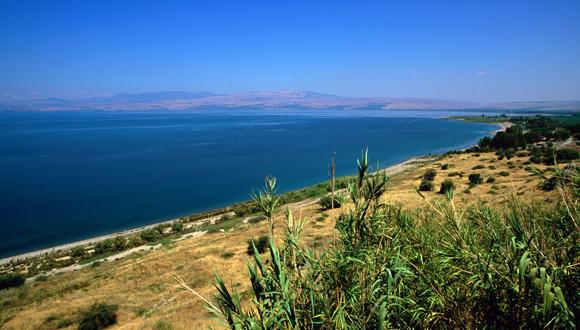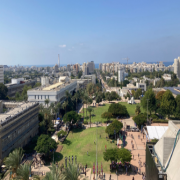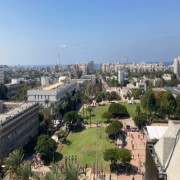TAU solves 3,000-year-old mystery with pollen
TAU archaeologists dig under Sea of Galilee and the Dead Sea to explain the collapse of Bronze Age empires in the Levant
More than 3,200 years ago, the thriving civilizations in and around modern-day Israel suddenly collapsed for reasons that have long been a mystery.
Now Prof. Israel Finkelstein and Dr. Dafna Langgut, 2024 Kadar Family Award recipient, of the Dr. Sonia and Marco Nadler Institute of Archaeology at Tel Aviv University and Prof. Thomas Litt of the University of Bonn in Germany have found an answer in the pollen at the bottom of Israel's lakes. In a study published Monday in "Tel Aviv: Journal of the Institute of Archaeology of Tel Aviv University" and reported in the New York Times, the researchers say it was drought that led to the fall of the ancient southern Levant.
As a result of this climate change, "in a short period of time the entire world of the Bronze Age crumbled," explains Prof. Finkelstein.
An unusually high-resolution analysis of pollen grains taken from sediment beneath the Sea of Galilee and the western shore of the Dead Sea, backed up by a chronology of radiocarbon dating, pinpointed the period of the crisis at between 1250 and 1100 BC. The study used a unique combination of technological, archaeological, and historical analysis to provide the fullest picture yet of the environmental disaster.
Several years ago, Prof. Finkelstein received a grant from the European Research Council to conduct research aimed at reconstructing ancient Israel. The project consists of 10 tracks, including ancient DNA and molecular archaeology. For the climate change part of the project, the researchers extracted about 60 feet of samples of gray muddy sediment from the center of the Sea of Galilee in northern Israel. Drills passed through 1,000 feet of water and into 65 feet of the lake bed, recovering evidence dating over the past nine millenia. At Wadi Zeelim in the southern Judean Desert, on the western margins of the Dead Sea, the researchers manually extracted eight cores of sediment, each about 20 inches long.
"Pollen is the most enduring organic material in nature," explains Dr. Langgut, a pollen researcher who carried out the actual work of sampling. "These particles tell us about the vegetation that grew in the vicinity of the lake in the past and therefore testify to the climatic conditions in the region."
The results showed a sharp decrease in the Late Bronze Age of Mediterranean trees like oaks, pines, and carobs, and a similar decline in the local cultivation of olive trees, which the experts interpret as the consequence of repeated periods of drought. The droughts were likely exacerbated by cold spells, causing famine and the movement of marauders from north to south.
Recent studies of pollen grains conducted by experts in southeast Anatolia, Cyprus, along the northern coast of Syria and the Nile Delta came up with similar results, indicating that the crisis was regional. After the devastation came a wet period of recovery and resettlement, according to the researchers, eventually giving rising to the kingdoms of biblical times, including ancient Israel and Judah.






